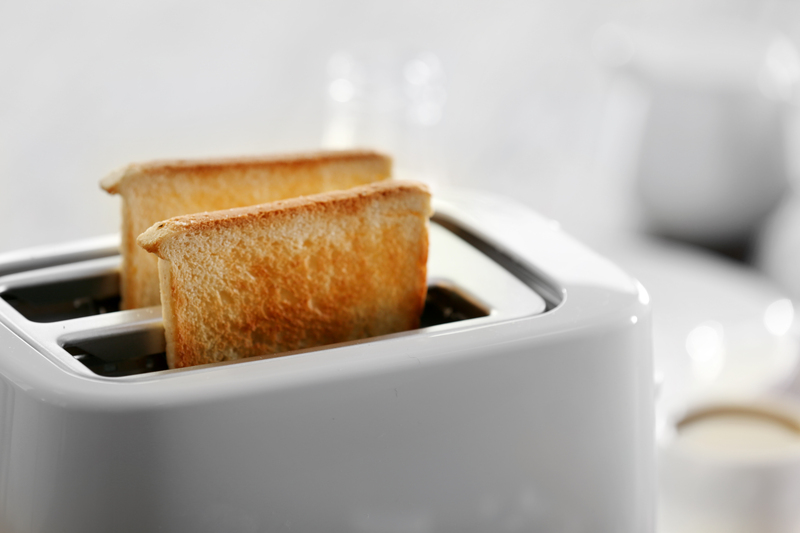Revitalize Your Kitchen: Simple Solutions to Grease on Enamel Trays
Posted on 15/09/2025
Revitalize Your Kitchen: Simple Solutions to Grease on Enamel Trays
Are you tired of battling stubborn grease on your beloved enamel trays? Keeping your kitchen pristine and your cookware shining can seem like a daunting task, especially when grease stains become a persistent problem. But worry not! With the right strategies, you can revitalize your kitchen and restore your enamel trays to their former glory. In this comprehensive guide, you'll discover effective, simple solutions to remove grease from enamel trays and maintain their brilliance for years to come.

Understanding the Challenge: Why Does Grease Linger on Enamel Trays?
Enamel trays have earned a spot in many kitchens due to their durability, glossy appearance, and even heat distribution. However, their shiny coating can sometimes attract and retain greasy residue, making them appear dull and uninviting. Grease on enamel trays doesn't just look bad--it can impact food flavors and even harbor bacteria if not regularly cleaned. But why is it so stubborn?
- Porous Surface Beneath the Glaze: Even high-quality enamel can develop tiny cracks or chips that trap grease.
- Layered Grease Buildup: Sequential use without thorough cleaning causes grease layers to harden and cling.
- High-Temperature Cooking: Baking or roasting at high temperatures often bakes the grease onto your enamel tray, making simple rinsing insufficient.
Understanding the root causes helps us target the most effective, kitchen-friendly cleaning solutions.
Basic Principles: How to Prevent Grease on Enamel Trays
The best cure is prevention! Managing grease on enamel trays starts with smart cooking and cleaning habits. Here are some quick tips:
- Line Your Trays: Use parchment paper or silicone mats to reduce direct contact between food and enamel.
- Wipe Promptly: Always wipe grease away while the tray is still slightly warm (not hot!) after use.
- Avoid Cooking Sprays: Some sprays leave behind residue that's tough to clean.
- Start Soaking Early: Soak the tray with warm, soapy water before the grease has a chance to harden.
Adopting these steps keeps that grease off your enamel trays in the first place, minimizing the need for major cleaning later on.
Simple Home Solutions: Reliable Methods for Removing Grease from Enamel Trays
1. The Classic Warm Water and Soap Method
Never underestimate the power of warm water and a quality dish soap! For fresh grease, this is often all you need.
- Fill the enamel tray with very warm water and add a few drops of strong dish soap.
- Let it soak for 30-60 minutes to loosen fresh grease.
- Use a non-abrasive sponge to scrub gently.
- Rinse thoroughly with clean water and wipe dry.
This is the gentlest method, helping to protect your enamel coating.
2. Baking Soda Paste: A Natural Degreaser
Baking soda is an iconic, eco-friendly cleaner renowned for its grease-busting power. When tackling more stubborn, baked-on grease, try this simple fix:
- Mix three tablespoons of baking soda with a few drops of water to form a thick paste.
- Spread the paste over grease-stained zones on your enamel tray.
- Let it sit for 30 minutes, allowing the natural abrasiveness of baking soda to break down residue.
- Scrub with a soft brush or non-abrasive scouring pad.
- Rinse and dry with a soft towel.
3. Vinegar and Baking Soda Reaction
Science to the rescue! White vinegar and baking soda together create a fizzing reaction that helps lift stubborn grease from porcelain enamel trays.
- Cover greasy spots with baking soda.
- Drizzle white vinegar carefully over the soda--watch it fizz!
- Wait for 10-15 minutes.
- Wipe with a damp microfiber cloth or sponge, working in circles.
Tip: Avoid using steel wool or harsh scouring pads, as these will scratch your enamel.
4. Lemon Juice and Salt Scrub
For an all-natural, fresh solution, combine lemon's citric acid with salt's gentle abrasiveness:
- Sprinkle a generous amount of salt over the greasy area.
- Cut a lemon in half and use it as a "sponge", scrubbing in gentle circular motions.
- Let the mixture sit for 10 minutes before rinsing.
- Enjoy the degreased and fresh-smelling enamel tray!
5. Commercial Cleaners: A Last Resort
If home remedies aren't enough, consider using specially formulated enamel-safe commercial degreasers. Always follow manufacturer instructions and double-check that the product is suitable for enamel surfaces. Rinse your tray thoroughly after use to remove chemical residues.
Routine Maintenance: Keep Grease Off Enamel Trays for Good
Prevention and consistent care make future cleaning easy. Here's how to maintain spotless enamel trays:
- Immediate Cleaning: Don't wait! The sooner you clean after cooking, the less likely grease will harden.
- Weekly Deep Cleaning: Even if your tray looks clean, set aside time for a thorough scrub to tackle unseen grease film.
- Avoid Metal Scraping: Protect the enamel surface by never using metal utensils or scouring pads.
- Use Soft Cloths: For drying and polishing, a soft microfiber cloth works wonders.
Frequently Asked Questions (FAQs) about Grease on Enamel Trays
Is it safe to use baking soda on enamel trays?
Absolutely! Baking soda's mild abrasiveness will not scratch quality enamel when used as a paste with water. However, avoid excessive scrubbing on older trays where the enamel may be thin or chipped.
What happens if I leave greasy stains on my enamel tray?
Grease can break down the enamel coating over time, especially if it seeps into cracks. This can result in permanent stains, odors, and an uneven cooking surface. Clean as soon as possible to maintain your trays!
How can I remove burnt-on grease that won't budge?
For the most persistent, burnt grease stains on enamel trays, try the baking-soda-and-vinegar method and allow it to soak for several hours. Avoid harsh abrasives or oven cleaners unless specifically labeled for enamel, as these can damage your cookware.
Can I put my enamel trays in the dishwasher?
Most modern enamel trays are dishwasher-safe, but always check the manufacturer's instructions. Handwashing is gentler and will extend the life and luster of your trays.
When to Replace Your Enamel Tray
Sometimes, despite your best efforts with grease removal solutions, damage can be irreversible. Watch for:
- Large chips or cracks in the enamel surface
- Extensive rusting on exposed metal
- Persistent, burnt-on stains that affect food safety
If these issues arise, it may be time to upgrade to a new enamel tray. Not only will it look better, but it will protect your food from contamination and ensure even cooking.
Why Proper Grease Removal is Key to Kitchen Health
Keeping your kitchen clean isn't just about looks. Grease buildup on enamel trays can create a breeding ground for bacteria and bad odors. Regular cleaning ensures healthy, tasty meals--and less time spent scrubbing later! Plus, a revitalized kitchen inspires confidence and joy in every meal you prepare.

Quick Reference: The Best Ingredients for Grease-Free Enamel Trays
- Baking soda - Non-toxic, deodorizing, gentle scrubbing power.
- White vinegar - Dissolves mineral deposits and degreases.
- Lemon juice - Natural acid that cuts through grease and smells great.
- Dish soap - Designed specifically for food grease removal.
Conclusion: Enjoy Your Grease-Free, Revitalized Kitchen
With these simple solutions to grease on enamel trays, you can keep your cookware sparkling, your meals delicious, and your kitchen a source of pride. Remember, routine care and quick action are your best weapons against stubborn grease. Whether you opt for natural home remedies or the occasional commercial cleaner, your enamel trays will remain safe, clean, and beautiful for years to come.
Start today and revitalize your kitchen--one sparkling enamel tray at a time!
```



